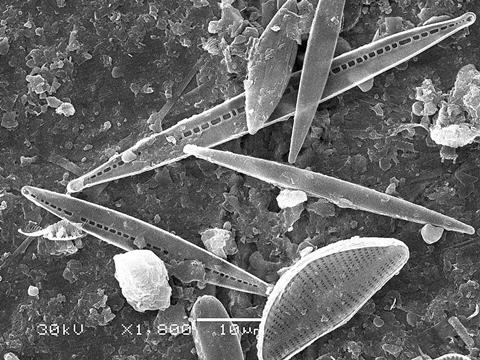A group of diatom species belonging to the Nitzschia genus gave up on photosynthesis and now get their carbon straight from their environment, thanks to a bacterial gene picked up by an ancestor.

Gregory Jedd of Temasek Life Sciences Laboratory, Singapore, and colleagues report these findings in a new study published April 1st in the open-access journal PLOS Biology.
READ MORE: Phytochromes: The ‘eyes’ that enable microalgae to find their way in the depths
READ MORE: Researcher to study role of tiny diatoms in protecting endangered marine animals
Unlike most diatoms, which perform photosynthesis to generate carbon compounds, some members of the genus Nitzschia have no chlorophyll and instead consume carbohydrates from seaweed and decaying plant matter. Previously, it was unclear how exactly they made this major lifestyle transition, so researchers sequenced the genome of one species, Nitzschia sing1, to look for clues.
Marine bacterium
N. sing1’s genome sequence showed that the diatom carries a gene for an enzyme that breaks down alginate, a carbon polymer in the cell walls of brown algae – a group that includes kelp and other common seaweeds. The gene originally came from a marine bacterium, and an ancestor of N. sing1 took up the gene and incorporated it into its genome.
Further analysis showed that, over time, the original gene was duplicated multiple times, with copies acquiring a variety of mutations that resulted in new functions. Those new functions have enabled N. sing1 to take up and break down alginate into carbon building blocks for the cell, so that photosynthesis is no longer necessary. This development also opened up a new ecological niche for this group of diatoms – living on seaweed in the intertidal zones.
Carbon compounds
While N. sing1 and many of its relatives can break down alginate, other non-photosynthetic Nitzschia species cannot, suggesting that these diatoms likely have other strategies for gaining carbon compounds. The researchers propose that sampling more Nitzschia species from the environment and sequencing their genomes will lead to a better understanding of how these diatoms source their carbon. Additional work in this area could also help us to learn more about how a single species diversifies into a range of new species and how carbon and other nutrients move through coastal habitats.
The authors add, “In this study we show how a non-photosynthetic diatom (diatoms are ancestrally photosynthetic microalgae) evolved the ability to metabolize the abundant brown algal cell wall polysaccharide alginate. This work not only identifies the evolutionary origins of a complex metabolic capability but also reveals the genetic mechanisms underlying the innovations that ultimately permitted these diatoms to occupy a new environmental niche as obligate heterotrophs.”







No comments yet